Sreebitha P. V
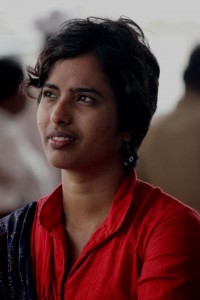 Two recent articles in The Hindu address the question of caste and gender in Indian Music and Dance. The first article titled ‘Sanskritization and Culture’, highlights the fact that many artists from the field of dance and music have rejected and embraced Sanskritization at different points in history. The second article, ‘No caste, no creed and no gender’ is an excerpt from the book A Southern Music: The Karnatik Story by the acclaimed vocalist T. M. Krishna. This gives us a glimpse of the caste, gender and religious bias in the world of Karnatik music. However, what struck me was that the figure of MS Subbulakshmi has been mentioned by both writers. Both talk of her as a woman who originally hailed from a Devadasi community and later acquired a respectable position in the world of Indian classical music either through the process of Sanskritization or by getting married to a Brahmin. Krishna does not give any direct reference to Sanskritization but says that she became a Mira from a Dasi in her husband’s house. According to him her actual positioning and social transformation is a product of the work of men in society, especially those constructing the modern Karnatik story. M. N. Srinivas defined Sanskritization as a process by which “a “low” Hindu caste, or tribal or other group, changes its customs, ritual, ideology, and way of life in the direction of a high, and frequently, “twice-born” caste” (Social Change. page 6). Many scholars have criticised this concept mainly because it reduces lower castes to mere emulators. Many anthropologists have rejected the concept of sanskritic/non-sanskritic traditions because they assume that any culture is a mixture of both. And most importantly the concept of Sanskritization fails to describe the process wherein the upper castes or Brahmins adopt lower caste traditions.
Two recent articles in The Hindu address the question of caste and gender in Indian Music and Dance. The first article titled ‘Sanskritization and Culture’, highlights the fact that many artists from the field of dance and music have rejected and embraced Sanskritization at different points in history. The second article, ‘No caste, no creed and no gender’ is an excerpt from the book A Southern Music: The Karnatik Story by the acclaimed vocalist T. M. Krishna. This gives us a glimpse of the caste, gender and religious bias in the world of Karnatik music. However, what struck me was that the figure of MS Subbulakshmi has been mentioned by both writers. Both talk of her as a woman who originally hailed from a Devadasi community and later acquired a respectable position in the world of Indian classical music either through the process of Sanskritization or by getting married to a Brahmin. Krishna does not give any direct reference to Sanskritization but says that she became a Mira from a Dasi in her husband’s house. According to him her actual positioning and social transformation is a product of the work of men in society, especially those constructing the modern Karnatik story. M. N. Srinivas defined Sanskritization as a process by which “a “low” Hindu caste, or tribal or other group, changes its customs, ritual, ideology, and way of life in the direction of a high, and frequently, “twice-born” caste” (Social Change. page 6). Many scholars have criticised this concept mainly because it reduces lower castes to mere emulators. Many anthropologists have rejected the concept of sanskritic/non-sanskritic traditions because they assume that any culture is a mixture of both. And most importantly the concept of Sanskritization fails to describe the process wherein the upper castes or Brahmins adopt lower caste traditions. 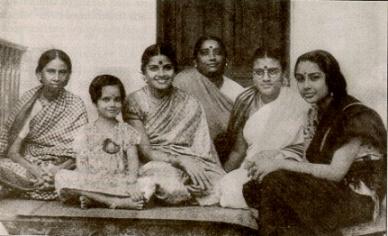
(From left: Veena Sanmugavadivu (mother of MS), Radha (Vishwanathan), MS Subbulakshmi, Lakshmi srinivasan, Vadivambal (sister of MS) and Kamala)
In fact, in the first write up, even other singers like Rukmini Devi and Balasaraswathi are described as differently but inextricably tied to the idea of Sanskritization, along with M.S. Subbulakshmi. Rukmini Devi, one of the first women from a higher caste to practice and perform Sadir/Bharatanatyam, is said to have modified the dance form by “purifying” it i.e., by ridding it of its erotic elements or its sensuality, and thereby removing the stigma of the devadasis. However, this process is not considered as problematic by the author and he describes this as a process of Sanskritization and Rukmini Devi is considered as the one who was irrefutably involved in endorsing Sanskritization in her field of art even though Rukhmini Devi’s effort was actually not related to the concept of Sanskritization. Because here it is a formerly low caste dance form that is being adopted and “revived” by the upper caste for the practice of upper caste girls. How can this be brought under the category of Sanskritization? Who are the emulators here? What are the essences which are kept alive in these art forms when it gets “purified”, “revived” or “elevated”?
TM Krishna’s description of Balasaraswathi, a Devadasi who rejected Sanskritization also add to this point. He writes, “She had complete faith in her own history and heritage as a Devadasi dancer; saw Sadir as ‘perfect’ and requiring no modification. She saw the process of sanitizing (arguably sanskritizing) as unnecessary, threatening to her art form and even vulgar. For her, this process was a deadly threat to the existence of her heritage and dance, as she knew it. Her rejection of Sanskritization, in many ways, defined her and her dance.” Here what has been considered as vulgar by the upper caste women is not vulgar to lower caste women. As we see Balasaraswathi’s case is enough to criticise the whole concept of Sanskritization in art forms. And we also see upper caste women like Rukhmini Devi who adopt the art forms of lower castes and lower caste women like Balasarawasthi who take pride in their heritage and are stringently against the process of Sanskiritization. Finally, as we see in the first write up, M.S.Subbulakshmi is considered as someone who was born into the devadasi tradition and who eventually shed most of her connections with her Devadasi past and went through the process of Sanskritization which helped her to convert to a prestigious rank. M.S.Subbulakshmi’s connection with Sanskritization is a more complex one and it needs more elaboration. Here the writer calls for a better understanding of India’s cultural history by examining social change. This becomes clear when we go through the excerpts of T.M. Krishna and see how from Dasi, Subbulakshmi became Mira. T.M. Krishna points out how men manipulated the space for women in Karnatik music and made sure women were kept in a subordinate position. He writes, “The bhakti music of MS was beautiful, uplifting, unforgettable, but the fact that there was another ‘MS music’ that was capable of being, and did indeed become, serious with all the rigour of art music has been lost to the legend of the ‘divine MS’. I regard this as a great loss.” And most importantly he adds, the Karnatik world that men had built denied her the musicianship that lesser men could aspire to. 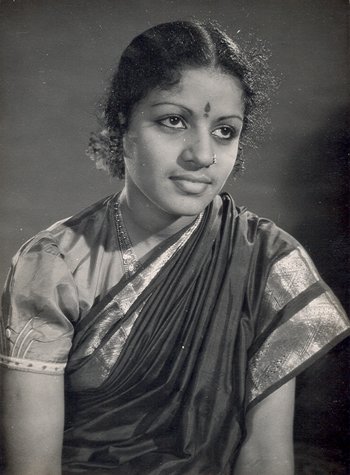
M S Subbulakshmi
This disproves the claim that MS had easily sanskritized herself through changing her appearance and nature, by getting married to Sadasivam, through her chaste rendering of Sanskrit ‘songs’ and even by the way she tied her sari, a madisar (nine yard sari worn by Iyers). In fact, she was actually giving up what she was really capable of, perhaps after a tremendous struggle, so as to find a space in the male dominated and casteist art world. One wonders how such a gendered process of adaptation and adjustment can be easily categorized as sanskritizing. T M Krishna’s narration of D.K. Pattammal’s story is even more interesting. She was celebrated as the first brahmin woman musician to perform in public and the first woman to render complex RTP (ragam–tanam–pallavis) in kutcheris. As Krishna notes the intention of proclaiming D.K. Pattammal as the first woman to render RTP was to place the capacity of the Brahmin woman musician above that of the Devadasi. This, however, is a wholly inaccurate position. RTPs were already an essential part of the repertoire of distinguished Devadasis like Coimbatore Thayi and Bangalore Nagarathnamma. 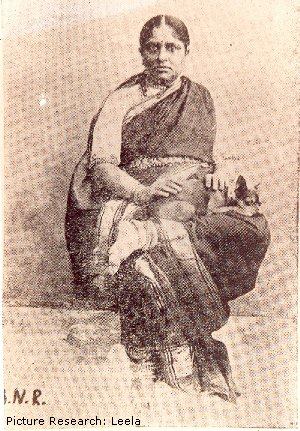
Bangalore Nagarathnamma
As rightly pointed out by Krishna, the compliment paid to Pattammal was less of a tribute to her than yet another expression of an attitude towards Devadasis. He also adds that D.K. Pattammal’s music was called ‘man’s music’ and the Brahmin woman was accommodated in the kutcheri world, but many male musicians would not accompany her. However, he notes that D.K. Pattammal was never accepted as an equal of male musicians and both MS and DKP became two sides of the same coin minted in the foundry of male, brahmin domination. What is interesting to me is the way in which all such appropriations, adjustments and construction of hierarchies are all brought under the rubric of sanskritization, which actually is not about any of these processes but the supposed way in which lower castes take on the customs of those above them. K. Satchidanandan, in an article titled, ‘The Folk and the Classical: Interrogating the Boundaries’ for instance, uses the same category of sanskritization while talking about how folk art was appropriated and diluted by the upper caste discourse. He writes:
“All the so-called classical forms were once confluential, hybrid, mixed, demotic, folk; only they got taken up by the elite. Once absorbed into the upper caste/class discourse, their disruptive energy and subversive world-view came to be smoothed out, their contours stylised and fixed for all time and subjected to a canon. The forms thus appropriated by the elite from the subaltern classes and castes came to be re-circulated at another social stratum consisting chiefly of middle and upper classes and castes. With the original authors, creators and practitioners left out in the cold” (The Folk, page 9).
Even as we can agree with all that he says, it is interesting that Satchidanandan thinks of this process as “akin to what the sociologist M. N. Srinivas called Sanskritization though different in its method and emphasis”. (The Folk, page 7) In other words, the ‘folk’ becoming ‘classical’ is considered by Satchidanandan as a clear case of appropriation through a process similar to ‘Sanskritization’. He cites several examples to prove this appropriation. He rightly points out how the dance of Devadasis was appropriated by Brahmin women and turned into the ‘eternal’ art of Bharatanatyam by “sanitising” its natural and erotic contents. The same is the case of Dasiyattom of Kerala which is transformed into Mohiniyattom.
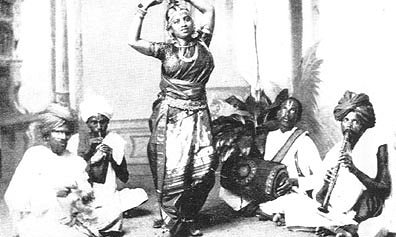 An old picture of a Devadasi performance
An old picture of a Devadasi performance
In both cases the original practitioners/real creators were pushed to the margins. And as he points out Dasis were often called as thevidichis, a distortion of Devadasis—which today has come to mean just prostitutes that entirely leaves out the devotional, artistic and intellectual aspect of their practice. He adds that the same had happened when Kathak was taken out of the Kotis leaving those women dancers to fend for their own in the red light streets of Mumbai or Delhi. He also writes about Ottan Thullal, which was created by Kunchan Nambiar, an upper caste artist in Kerala. This was also based on elements from the Parayan Thullal, Pulayanattoms and Padayani, all subaltern forms of ritual dances. Ottam Thullal was presented as a challenge to the elitist Koothu, where a Chakyar interprets Sanskrit slokas (verses) in front of an upper caste audience, and from folk art it was brought into the temple and was stamped as ‘classical’ art. According to him Classicalised arts like Kathakali also have a lot of folk elements which are seldom acknowledged. Most importantly he says it is equally true of classical music. The ragas, both Carnatic and Hindustani are but systematised tunes available in the folk songs. Though Satchidanandan’s study brings out the complexities of caste and gender in the art world, he also addresses it as a process similar to Sanskritization. Why is it that one finds it difficult to name this process as deliberate appropriation and exploitation by the upper castes? Why is Sanskritization, a term which posits the upper caste culture as superior and imagines the lower caste as aspiring to this superior culture being used in all these analysis? Why is the onus of transformation put on the lower castes like this, when it is actually the upper castes that have borrowed freely from lower castes and skillfully hidden their sources and in fact destroyed the very art forms they have borrowed from? In fact, it needs to be said that the concept of Sanskritization in the art domain exposes it as a fallacious theory. What was happening was the forceful adaptation of the lower caste forms by the upper castes. And we see these continuous and conscious efforts from the side of the upper castes. They often tend to forget figures like Balasaraswathi and invoke Subbalakshmi’s talent to sell brahminical values and make it acceptable to all. What we need to understand is that the cultural history of India needs to be studied by problematizing many established notions. In other words, for a better understanding of the complexities of caste and gender in Indian Music and art forms, one needs to do a critical enquiry of social change in India.
~
References “Sanskritization and Culture”. The Hindu, November 8, 2013. http://www.thehindu.com/opinion/op-ed/no-caste-no-creed-no-gender/article5452465.ece “No Caste, no creed, no Gender”, The Hindu, December 13,
2013. file:///C:/Users/admin/Desktop/No%20caste,%20no%20creed,%20no%20gender%20-%20The%20Hindu.htm. Satchidanandan, K. “The Folk and the Classical: Interrogating the Boundaries.” Indian Literature, Vol. 54, No. 1 (255) (January/February 2010), pp. 6-12. Published by: Sahitya Akademi. Stable URL: http://www.jstor.org/stable/23344124 .Accessed: 21/01/2014 06:28 Srinivas, M N. Social Change in Modern India. Orient Longman: New Delhi, 1972.
~~~
Images courtesy: The Internet.
Sreebitha P. V. is Assistant Professor at the Dept. of English, Central University of Karnataka. She recently submitted her thesis titled “The Making of ‘Ezhava’: Caste, Communities and Gender among North Malabar Thiyyas and Thiruvithamkoor Ezhavas” to the Centre for Comparative Literature, University of Hyderabad. Her multidisciplinary research focuses on caste and gender in Kerala. Sreebitha is a trained dancer and performs Bharatnatyam, Kuchipudi and Mohiniyattam.
This article was also published in Round Table India.
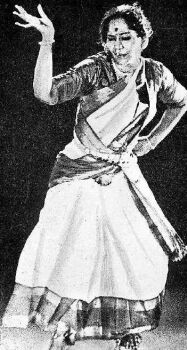
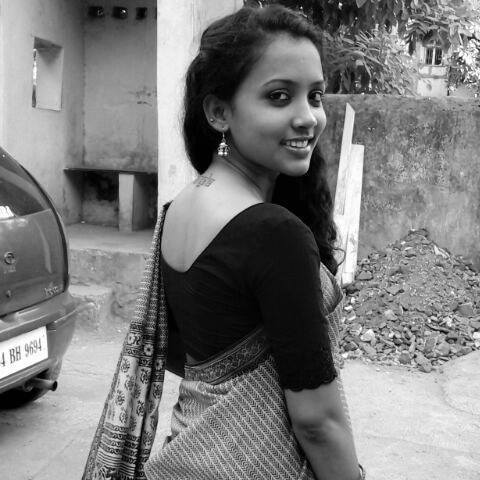
Sreebitha, i think you can twist the argument to say — how the phenomenon is rather devadasization (obvious reference to Ilaiah) than sansritisation since more and more brahmins take up the profession of dancing 😉
Sree, One can also argue (or as Sowmya said ‘twist’)that the lower castes also have agency and they can use -appropriate and articulate distinctly- the widely accepted and revered space of upper caste aesthetics through diverse styles. Their presence itself is a subversion/irritation/reluctant acceptance etc. I would like to see Subbalakshmi as one among them. We need to sharpen our tools to understand the subtle ways of these kinds of strategic appropriations and agential interventions of the lower castes. I am not an expert in this area of music and dance though. Aren’t you denying any agency for M.S (whatever little ways she tried to bring it in the forefront of the ‘sanctum sanctorum’ of the now known Carnatic music) ?
Girijechi, Thanks for your comment. I totally agree with your point regarding the agency of lower castes. I have highlighted Balarasarwathi for the same reason. I am not negating agency of M.S. Whatever materials I have gone through suggests that she has gone through the process of sanskritisation. My article is against such sweeping generalisation. I need to do a lot of research before I go for a statement.
The Article was amazing but correct me if i am wong, might be in the past there was a concept of Sanskritization but happy that the lower caste people weren’t completely ignored they still were accepted and in these days there is definitely no such prevailing and for anyone interested in any kind of music you have many online music store
Dr Sreebitha your article is well written and informative. you have rightly used the word “Sanskritisation” coined by M.N.Srinivas in the context of Music and dance. Hope to see more articles of such type from your side. keep it up.
I felt that the article ‘Sanskritization and Culture’ is very shallow. The author’s comment that Rukmini Devi and Balasaraswati respected each other had to be taken with a pinch of salt as Balasaraswati was an outspoken critic of Rukmini Devi’s version of Sadir (Bharatanatyam)- be it her understanding of the fundamental principles and dance elements that constituted the art form or her modernization techniques in costume and stage setting. Several anecdotes reveal Rukmini Devi’s highhandedness and Bala’s tit-for-tat responses.
As you rightly pointed out the theory of sanskritization does not explain the various changes that took place in the field of music and dance in India. The “classical” “Indian” art forms, especially dance and music, are the products of cultural nationalism. In order to conform to the nationalist agenda they were put through various processes such as sanitization, aestheticisation, canonization, objectification, commoditization, and museumisation. Thus, the art forms were made representative of what is now showcased as Indian tradition, values, customs, culture, spirituality. Although this general pattern of extraction, abstraction and re-composition is a pan-Indian phenomenon, each art form has also undergone mutations based on its region-specific social, political, and cultural changes. Likewise, how these changes affected the vocabulary and structure of the art forms are also different. Therefore, how Tevidicciyattam became Mohiniyattam is slightly different from Sadir becoming Bharatanatyam. For example, Mohiniyattam’s devadasi lineage is still contested by the traditional dance historians.
What I infer from my reading of the dance literatures is that the term Sanskritization has more nuances and intricacies and not strictly speaking just the emulation of the upper caste rituals and practices by the unprivileged castes as proposed by M.N. Srinivas. In my opinion, the term is also used to critique the upper caste hegemony, aesthetics and ideology. For example, consider the usages such as ‘sanskritized body’, ‘sanskritized Hindu doctrine’, ‘sanskritized brahminical Hinduism’, ‘sanskritized brahminical way of life’ etc. This certainly does not denote only a bottom-up movement but also a top-down movement, and a movement that is almost militant and akin to hindutvaisation or saffronisation, although these terms are so loaded and cannot be used loosely or interchangeably. In the case of Indian dance history, this can be seen in its distasteful adherence and exclusive association with Sanskrit tradition, Sanskrit literary canon, poetics, classicism etc. For example the nationalist historiography asserts a civilized and cultured India with its oldest, continuous and uninterrupted performance history that dates back to Natyasastra of Bharata. It would want us to believe that if at all there were moments of interruption or discontinuity, it was during the time of “foreign” “marauders” like the Mughals or the British. This monolithic national myth does not recognize the devadasis or other non-caste Hindu dancing bodies, their labour and ownership. Worse still, while the art forms of these cultural practitioners would be usurped and appropriated, the practitioners would be demonized as national filth. In the case of devadasis, the anti-nautch campaign and anti-dedication movement of the 1880s made sure that they will be considered a national aberration unless proved otherwise by marrying and becoming dependent solely on their husbands for a living and attaining status. (For example, Periyar and his “Self Respect Movement” condemned the devadasi practice and advocated devadasi marriage in 1929). I think we can call this a sanskritized narration of history where history is told from the viewpoint of the powerful (in this case a Sanskritist/ Sanskrit scholar) where there is selective amnesia or selective memory, and if at all other traditions are recognized, it will be as “little traditions” pitted against this “Great Tradition”.
Hello Rose
I appreciate your critique regarding my article. To call the entire article shallow is a bit harsh in my opinion, specially since a column in the newspaper only permits an author to say whatever he or she has to say in 600 words. Alas, all the arguments one makes in such an article cannot be substantiated in such few words. I encourage you to visit my blog, or read my thesis on the multiple modernities of Indian dance – there, the disagreement between Bala and Rukmini are documented in greater detail.
However, it is factually incorrect to say that Rukmini Devi and Bala did not respect each other. They had very fundamental differences of opinion, and there have been several dialogues exchanged between them that have been documented – yes. There you are correct. But to infer from that they did not respect each other as artists is, in my opinion, a simplistic reading of the two women and their lives. Both Rukmini Devi’s biography as well as Balasaraswati’s biography, both of which I have read, give a very balanced perspective on how the two felt towards each other.
Thank you for your feedback anyway.
p.s. In comparison to an academic study, of course the newspaper article is shallow! :)I would love to read your thesis, by the way, and would love to share mine with you if you are interested. I’m always keen on understanding different points of view and having a robust debate on dance and culture! If you would be interested, do email me!
/*This monolithic national myth does not recognize the devadasis or other non-caste Hindu dancing bodies, their labour and ownership.*/ Why were the devadasis derecognized? Because of the propaganda by the Christian missionaries that they were prostitutes. Conveniently all the wicked propaganda by the Christians are forgotten.
Dear pp, (How I wish you had the guts to appear in your “real” name rather than hiding behind an acronym/pseudonym)
I had left out many details such as the role of Christian missionaries and their moral sense, propagation of such European Christian moralities by the various Indian social reformers themselves, and even the irony that it is in fact the Orientalist view of India and Indian history that is now considered and remains as “our own” history and culture. I did not mention all that in detail because an already longish comment would then have turned into another essay. It was not because, as you would *want* to believe, a “convenient forgetting”. If you would *really* like to engage with my reading, work, and the references that had helped me in looking at such issues, you are welcome to read my M. Phil thesis titled “Politics of Performance: Contemporary Issues of Gender and Community in Mohiniyattam” submitted at University of Hyderabad in August 2011, for a constructive criticism.
Hello Rose
I appreciate your critique regarding my article. To call the entire article shallow is a bit harsh in my opinion, specially since a column in the newspaper only permits an author to say whatever he or she has to say in 600 words. Alas, all the arguments one makes in such an article cannot be substantiated in such few words. I encourage you to visit my blog, or read my thesis on the multiple modernities of Indian dance – there, the disagreement between Bala and Rukmini are documented in greater detail.
However, it is factually incorrect to say that Rukmini Devi and Bala did not respect each other. They had very fundamental differences of opinion, and there have been several dialogues exchanged between them that have been documented – yes. There you are correct. But to infer from that they did not respect each other as artists is, in my opinion, a simplistic reading of the two women and their lives. Both Rukmini Devi’s biography as well as Balasaraswati’s biography, both of which I have read, give a very balanced perspective on how the two felt towards each other.
Thank you for your feedback anyway.
p.s. In comparison to an academic study, of course a newspaper article seems shallow! I agree with you to that extent. I would love to carry on this discussion, maybe through email? I am also interested in reading your thesis. Do let me know where I can find it. Thanks!
I really appreciate your reference to Christian Missionaries and I would also like to add the Colonial rule that de-glorified the rich past and heritage of Indian arts, pushing them away from social customs to the dark quarters of the society. We are grateful to visionaries like Rabindranath Tagore, Rukmini Devi Arundale, Vallathol Narayana Menon for their pioneering efforts in reviving , re-vitalizing and help establish our rich cultural heritage. India is a treasure house for art lovers irrespective of their geographical locations across the world.
Thank you Sreebitha for the informative article.
Best
Sanjukta
Hello
The first article you are referring to has been written by me. I would appreciate it if you could refer to me by name rather than ‘the writer of the first article’. 🙂 Kindly do make the neccessary changes, thank you. I am Aranyani Bhargav, and like T.M.Krishna, I am an artist who writes about her practice. I am a Bharatanatyam dancer. Would really appreciate an appropriate reference.
Thank you!
Hey, the link marked ‘Sanskritisation and Culture’ leads back to the TM Krishna piece. Here’s the right link to it – http://www.thehindu.com/todays-paper/tp-features/tp-fridayreview/sanskritization-and-culture/article5326946.ece
Also, for the record, the author of ‘Sanskritisation and Culture’ DOES find the ‘purifying’ of Bharatanatyam by Rukmini Devi to be intesenly problematic. I have written about it repeatedly in other articles in the same column, ‘Footloose’. I have also written in other articles about how the term ‘revival’ is itself controversial and disputed. However, THIS particular article, was not about whether this purification was problematic or not. It is simply not possible to cover all these complexities in 600 words. Do read my other articles for my opinions about Bharatanatyam’s ‘purification’ and ‘revival’. Thank you.